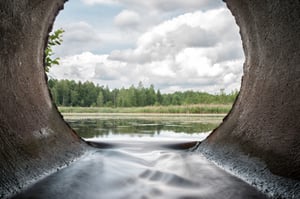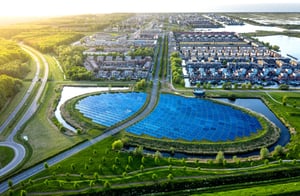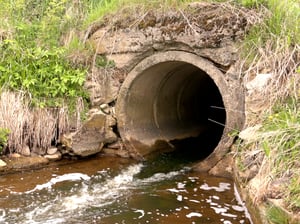SUSTAINABILITY
Concrete's durability and resiliency makes it one of the most sustainable infrastructure materials available.
In nearly every industry today, sustainability is a central focus and infrastructure is no exception. To be sustainable, a community's infrastructure needs to be able to efficiently and reliably support its current needs, but also its growing needs for the future with minimal-to-no disruption to the surrounding environment or without causing a long-term financial burden. Concrete pipe's inherent resilience, strength, and durability does just that. Designed to have a life of 100 years, but proven to have more, concrete pipe has provided communities with long-lasting and resilient infrastructure hundreds of years and will continue to be the most sustainable solution for communities moving ahead.
The Principles of Sustainability
The definition of sustainability continues to evolve as does the narrative around it and society's need for long-lasting solutions, but often revolves around three main principles: economic, environmental, and social.
See the role concrete pipe plays in the sustainability of our communities:
Since it was first used for drainage, concrete pipe has proven itself as the best environmental, economic, and societal drainage choice. To learn more about the sustainability of concrete pipe, we encourage you to read our Resilience & Sustainably Report.
Sustainability Resources
Sustainability Brochure
Sustainable Concrete Pipe
Three Pillars of Sustainability
Environmental Considerations and Carbon Footprint
In nearly every industry today, sustainability is a central focus. Are the products being produced and processes used to create them harmful to the air, water, or land? How can we measure the environmental impact of production and know with certainty we’re making a responsible choice for the environment? In the concrete pipe industry, we take sustainability very seriously. Our products are locally available, produced with materials from the earth, and designed to last for generations.

Understanding Product Emissions and Concrete Pipe
What’s the impact of different building materials on relative global warming? According to recent data, reinforced concrete pipe (RCP) produces anywhere from 90% to 95% less CO2 emissions per unit weight than alternative product materials. To understand the total amount of emissions a product produces, it’s important to first examine the product’s entire life cycle. That starts with looking at product emissions.

Transportation Resilience for a Changing Climate
Year after year, States and communities across the Country are seeing an increasing number of intense extreme weather events, causing substantial impacts to transportation systems across the United States. This webinar focuses on resiliency and sustainability by featuring Pennsylvania Department of Transportation and how they are working toward meeting the challenges involving climate change, equity, infrastructure resiliency, and safety.

Resilience & Sustainability of Drainage Structure
The concepts of resilience and sustainability are not new to anyone, but the significance and importance of these terms has grown exponentially in just the last decade. While these terms are easy to talk about in a philosophical sense, we must grow our understanding of how to implement resilient and sustainable principles in design. This presentation will expound on the terms of resilience and sustainability and provide useful insight as to how each might be assessed and measured in the design process, specifically related to drainage infrastructure.




